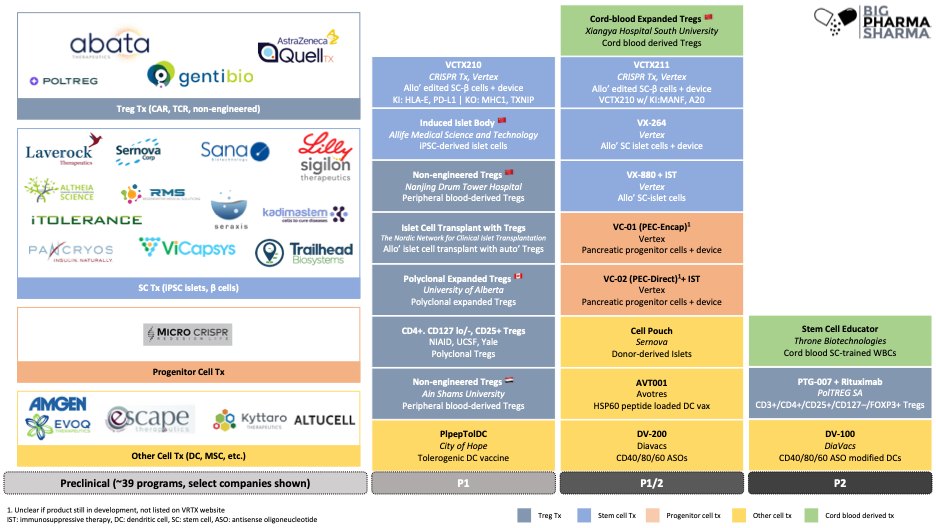Cell Therapy for Type 1 Diabetes Landscape
A quick dive into the cell therapy type 1 diabetes landscape before the Thanksgiving holiday
Introduction

With Thanksgiving just around the corner, my mind was drawn to the delicious meals we will all be having and the correspondingly profound insulin response we will all need to illicit to properly digest our respective meals. Sadly, for people suffering from Type 1 Diabetes (T1D), Thanksgiving can be a particularly challenging time. T1D patients are heavily dependent on exogenous insulin to properly regulate their blood-glucose levels. As you can imagine, this is a treatment that isn’t modifying the disease itself in any way, and instead simply providing an exogenous workaround to an endogenous root cause. Insulin is still relatively ineffective, with less than a third of US patients able to consistently achieve their target blood-glucose levels. A primary acute side-effect of insulin use is hypoglycemia, which can be dangerous and requires immediate intervention. Continuously high blood sugar levels over time, due to ineffective treatment, can lead to long-term complications like diabetic retinopathy, foot ulcers, neuropathy, cardiovascular disease, and kidney disease among many other issues. Just in the US alone, there are an estimated 1.25M people living with T1D with 64,000 new patients diagnosed each year.
Fortunately, there are many companies working diligently to treat and potentially cure T1D. Today, continuing from last week’s look into the autoimmune cell therapy landscape, I decided to look at the landscape of cell therapies in development for T1D and pull out some key insights and takeaways.
T1D Cell Therapy Landscape
Key Takeaways and Insights
Landscape can be broadly classified into regenerative and therapeutic approaches. Regenerative approaches focus on replacing or adding functional insulin producing cells via a transplant procedure, while therapeutic approaches commonly look to establish immune tolerance or suppression/deletion of auto-reactive cells contributing to disease.




